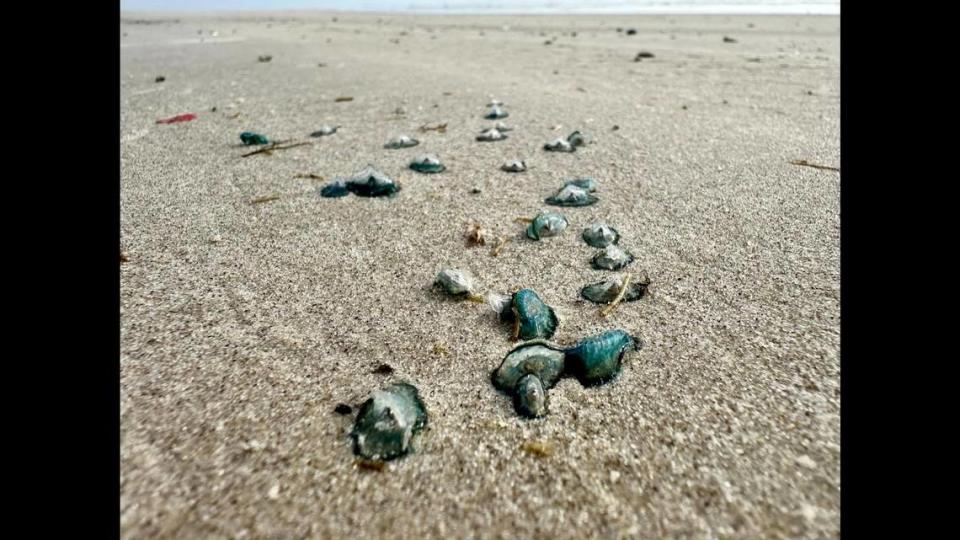Vibrant ‘blue dragons’ appear on beach, Texas photos show. Just avoid their ‘fingers’
A “blue wave” is bringing a flood of colorful, stinging creatures to Texas beaches, but experts warn beachgoers to watch out for one critter in particular: the “blue dragon.”
“Thousands of by-the-wind sailors (are) washing up, quite a few small man-o-wars, and the rarely seen blue dragon,” the Harte Research Institute for Gulf of Mexico Studies said in a Feb. 12 Facebook post.
“Do not touch the blue dragon!” the institute says, and especially don’t let it touch you with its “fingers.”

Powerful seasonal winds blowing from the southeast are responsible for the sudden surge of various jellyfish and man-o-wars appearing on and in the waters around Padre Island — and all of them are food for the blue dragon, experts said.
A species of sea slug, blue dragons only measure about 1 inch long but can dole out excruciating pain if they feel threatened, Jace Tunnell of the Harte Institute told McClatchy News.
While critters like the man-o-war are infamous for their devastating sting, the lesser-known blue dragon preys upon it, unbothered as it tears bite after bite from its long tendrils filled with pain-inducing chemicals, experts say. It then uses those toxins for its own protection, turning them into venom it stores in its finger-like appendages.

Blue dragons don’t produce any venom on their own, they rely on their prey to supply them with the chemicals they need to defend themselves, Jace Tunnell of the Harte Institute told McClatchy News.
“The sting from a blue dragon is very painful and would be just as intense as a man o’ war since they concentrate the stinging cells of the man o’ war in their finger like appendages,” he said. “When provoked, they can release the stinging cells all at once, inflicting intense pain.”
Part of what makes blue dragons dangerous, aside from their venom, is their small size that makes them difficult to spot.
“Most people would never see the blue dragon even if they were looking for it since they are fairly small, only about an inch long,” Tunnell said.
And when people are able to spot them, they’re often tempted to get up close, sometimes too close.
“The blue dragons are beautiful and interesting looking which makes people want to touch them,” he said. “We suggest only taking pictures to avoid an unpleasant day at the beach.”
If stung by a blue dragon, “the intense pain usually goes away after about 30 minutes,” Tunnell said, adding that pouring warm water and vinegar on the site of the sting is the best treatment.
Despite the blue dragons and other creatures washing in, there’s no reason for people to feel afraid of the beach, he said.
“The man o’ wars, by the wind sailors, and blue dragons come in pockets along the beach, so when people go out swimming, they just need to be mindful of what’s washing in,” Tunnell said. “We always hear of folks getting stung by man o’ wars, but it shouldn’t (deter) folks from coming to the beach, it’s just part of being in the ocean.”
Man stumbles onto ‘torpedo’ with ‘unsettling’ blinking light, New York photos show
Transparent creatures with gazing stare litter Texas coast in ‘rare’ event, photos show
Massive eagle nest spotted in West Texas amazes wildlife officials. ‘I mean golly’

